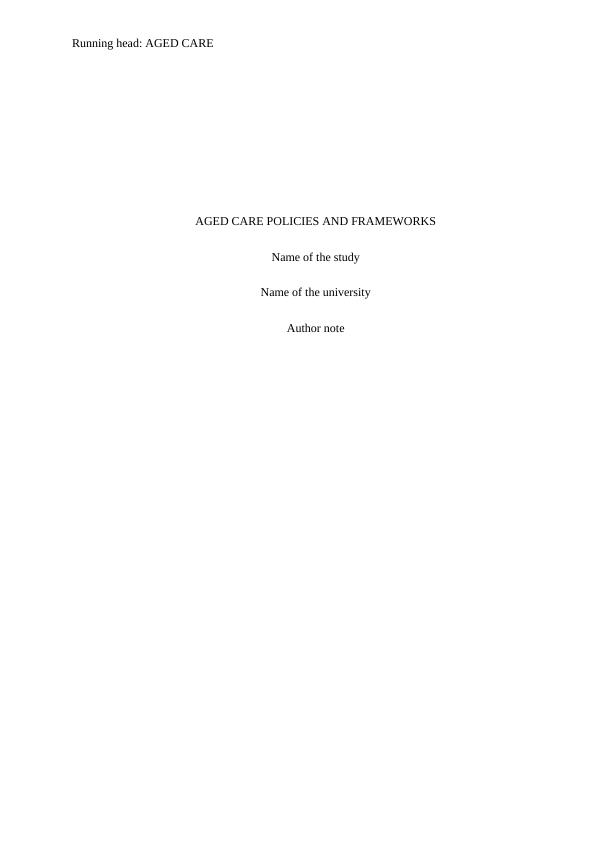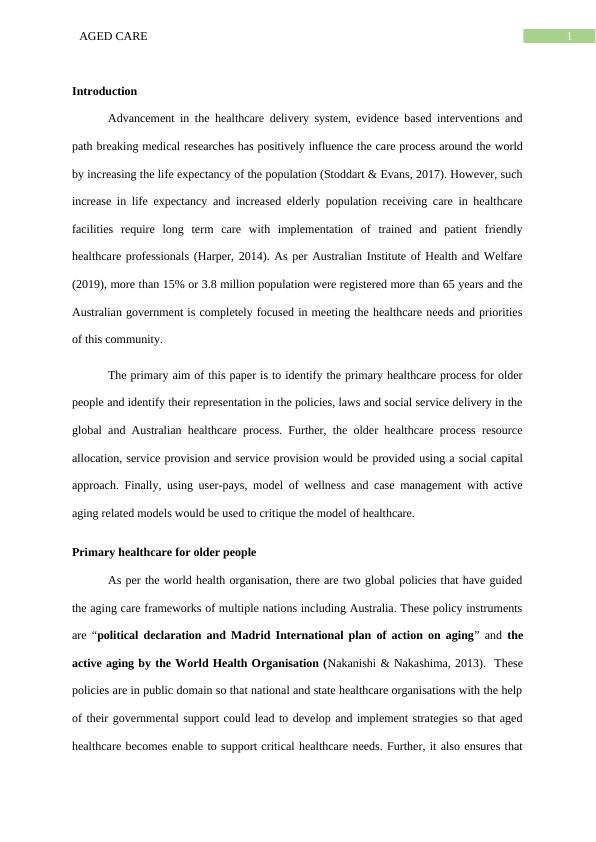Aged Care Policies and Frameworks
9 Pages2324 Words107 Views
Added on 2023-04-21
About This Document
This paper explores the primary healthcare process for older people and their representation in global and Australian healthcare policies and frameworks.
Aged Care Policies and Frameworks
Added on 2023-04-21
ShareRelated Documents
End of preview
Want to access all the pages? Upload your documents or become a member.
Personalised Music Therapy for Older Adults with Parkinson's Disease and Dementia
|14
|3054
|282
Health and Socio Political Issues in Aged Care Report 2022
|10
|2237
|36
Primary Health Care for Older Adults in Australia
|9
|2551
|71
Assignment on Policy Analysis
|14
|4582
|21
Why is healthy ageing important to individuals?
|4
|508
|363
Australian Institute of Health and Welfare
|9
|2711
|28



